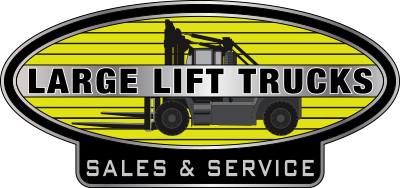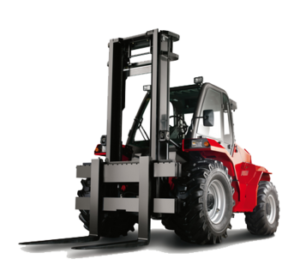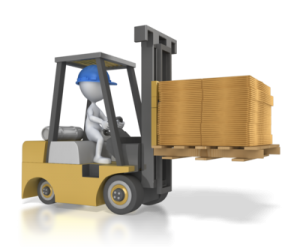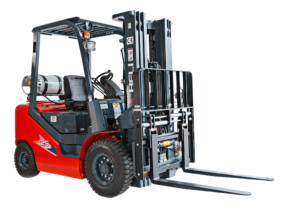Guide to Forklift Telematics
Forklift telematics utilizes GPS, sensors, and wireless communication to obtain real-time data on forklift usage and performance, store and analyze the data, and help fleet managers improve their operations and safety. They benefit the users by improving safety, reducing costs, enhancing efficiency, and improving operator accountability. Before we dive deep into the topic, let’s learn the basics.
What is Forklift Telematics?
Forklift telematics obtains instantaneous information such as speed, operation, battery level, location, and other potential data and is stored on the central server through Wi-Fi. The stored data is then processed to provide analytics on forklift performance, operator behavior, and maintenance notifications.
Why use Forklift Telematics?
With forklift telematics in place, you can reap the following benefits:
- Improve safety and avoid accidents
- Enhance performance and usage
- Reduce costs
- Improve customer service
- Enhance discussion-making capabilities
In this blog, let’s discuss how forklift telematics work and their key features and benefits.
How does forklift telematics work?
The forklift telematics has 3 components: hardware, connectivity, and software.
Hardware:
The hardware component includes GPS trackers, sensors, and a data handling unit which is preinstalled in the forklift. It is used to collect real-time data on the forklift’s performance, location, and driver’s speed and vehicle usage.
Connectivity:
The entire system is connected via a wireless network which is Wi-Fi, Bluetooth, or cellular network to send the collected real-time data to the central server.
Software:
The software includes a data handling unit that processes the collected information into useful insights that help fleet managers analyze the data and make informed decisions.
Key Features
Some of the key features of forklift telematics are:
Location tracking through GPS
Managers can track the real-time location of forklifts within the proximity to optimize routes and avoid unauthorized use.
Monitor performance & inefficiencies
Real-time monitoring of speed, engine progress, fuel level, finding nonfunctional equipment, and potential problems.
Damage detection
Sensors in the telematics will detect all potential damages and impacts on equipment or facilities and provide visibility to the manager.
Analytics and Reports
Comprehensive reports on all metrics including cost savings, performance improvement, operator behavior, and other important metrics to make accurate decisions.
Checklists
Telematics trigger notifications to prompt operators to complete safety checks before operation.
Prevent unauthorized access
Telematics provides access to only authorized drivers through badges or fobs to prevent unauthorized personnel from operating forklifts.
Alert notification
Managers will receive immediate notification when any impacts occur to take prompt action and investigation.
Monitor Speed
Managers receive notifications when the operator exceeds the speed limit.
Avoid collisions
Telematics advanced technology systems detect any obstacles or vehicles on their way in real time and provide immediate warnings to the operator.
Monitor driving habits
Track rash driving, harsh braking, speeding, and other operator behavior to provide improved training and coaching.
Forklift Optimization
Monitor how forklifts are used to help managers optimize fleet size and allocate resources.
Benefits
Reduce costs
By analyzing forklift utilization charts, managers can save fuel, reduce idle time, and save maintenance costs.
Route plan
Telematics real-time data helps to optimize routes to reduce travel distance and save fuel.
Preventive Maintenance
Managers can make decisions on maintenance, reduce downtime, and prevent potential breakdowns.
Minimize insurance costs
Forklift telematics reduce insurance costs by avoiding accidents, enhance safety and thus result in low insurance premiums.
Enhance safety
Detects unsafe driving behaviors and provides alerts to operators and managers to avoid collisions.
Enhance efficiency
Telematics detects underutilized equipment to optimize fleet optimization and avoid overtime and additional forklifts.
Safety procedures
Telematics enforce safety checklists and block unauthorized drives to avoid OSHA violations.
Improve material handling
Telematics control material handling by providing real-time data on forklift activities.
Regulatory compliance
With Telematics data, you can document operator training, pre-shift inspections, and safety procedures adherence to ensure regulatory compliance.
Enhance customer service
By reducing downtime and forklift operations, telematics improves customer service and satisfaction.
In the future of forklift telematics, we can expect the integration of advanced technologies like AI and IoT will improve predictive analytics, data analysis, and safety systems by focusing on sustainability and optimizing energy utilization. To install a forklift telematics, contact our expert today.
About large lift trucks
Large lift trucks provide sales and services of new and used forklifts and their components. We understand your needs and analyze your work site to suggest the right forklift and its components. Contact us to install the suitable telematics for your forklift.
FAQs about Forklift Telematics
What is forklift telematics?
Forklift telematics includes GPS, sensors, and wireless communication to obtain real-time data on its usage and performance; it also provides valuable insights to help fleet managers improve their operations and safety.
Why use forklift telematics?
Forklift telematics improve safety and avoid accidents, enhance performance and usage, improve customer service, and discussion-making capabilities.




